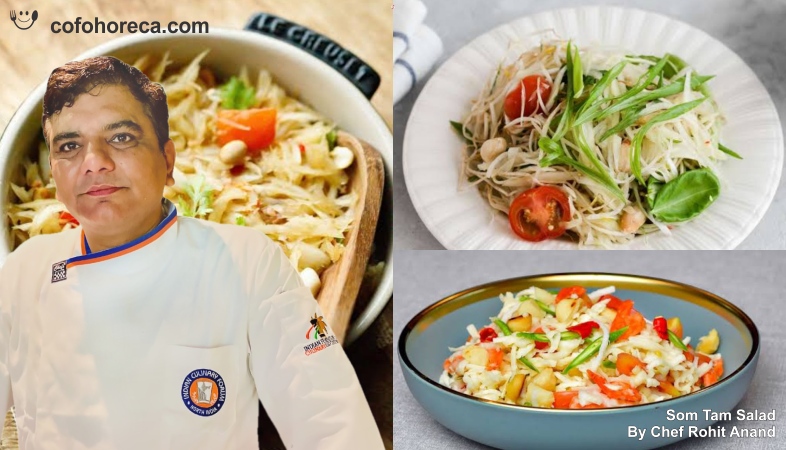Banana Leaf Cooking Beyond India: Global Variations
Known for its aromatic, natural, and eco-friendly qualities, it has become a staple in the Indian subcontinent.
Banana leaf cooking is a centuries-old tradition deeply
rooted in the culinary culture of India. Known for its aromatic, natural, and
eco-friendly qualities, it has become a staple in the Indian subcontinent. But
what many may not know is that banana leaf cooking has also found its way into
various cuisines around the world. From Southeast Asia to the Pacific Islands
and even parts of Africa, the use of banana leaves transcends borders, offering
a unique, sustainable, and flavorful method of cooking.
In India, banana leaves are used for cooking and serving food, particularly in South Indian and coastal cuisines. The leaves are typically used to wrap rice, curries, and other dishes before steaming or grilling them, helping to infuse the food with a distinct aroma and flavor. The process allows the leaves to act as natural steaming vessels, locking in moisture and enriching the flavors of the food inside. However, banana leaves are not confined to Indian kitchens. In fact, this cooking method has been adapted and embraced by various cultures worldwide, each incorporating it in their unique way.
In Southeast Asia, banana leaf cooking is a common practice. In countries like Thailand, Vietnam, and Indonesia, banana leaves are used to wrap a variety of dishes before cooking them over an open flame or steaming them. Thai cuisine, for instance, features a dish called "Miang Kham," where banana leaves are used to wrap a mixture of spices, peanuts, lime, and shallots, creating a deliciously tangy bite-sized treat. Similarly, in Indonesia, banana leaves are often used to wrap and cook fish, particularly in dishes like "Pepes Ikan," where fish is marinated with spices, wrapped in banana leaves, and then grilled or steamed. The banana leaves infuse the dish with a subtle earthy flavor, while also helping to retain the moisture and tenderness of the fish.
Moving further east to the Pacific Islands, banana leaf cooking is prevalent in countries like Fiji, Samoa, and Hawaii. In these regions, banana leaves are often used for traditional feasts and gatherings. In Fiji, for example, a method known as "Lovo" is used, where food such as pork, chicken, fish, and vegetables are wrapped in banana leaves and then cooked in an underground oven, known as a "lovo pit." The heat from the stones in the pit helps to steam the wrapped food, making it tender and infused with the aromatic flavors of the banana leaves. In Hawaii, a similar technique is used to prepare "luau" dishes, where pork and other ingredients are wrapped in banana leaves before being slow-cooked in an imu (a traditional Hawaiian underground oven).
In parts of Africa, banana leaf cooking has a long history, particularly in regions where the plant is abundant, such as Uganda, Ghana, and Nigeria. In Uganda, banana leaves are commonly used to wrap and cook matoke, a variety of green banana, which is typically boiled or steamed. The banana leaves help to impart a subtle flavor to the dish, while also helping to retain the nutrients. In Ghana, banana leaves are often used to wrap fish or meat, which is then either grilled or smoked, giving the dish a distinctive, smoky aroma. In Nigeria, the leaves are also used for wrapping food, especially during traditional ceremonies and feasts.
In addition to its use in cooking, banana leaves are also an important part of the presentation in many cultures. In countries such as Sri Lanka, Malaysia, and the Philippines, banana leaves are used as plates to serve food, offering a natural and sustainable alternative to plastic or ceramic dishes. The leaves not only provide a vibrant, aesthetic appeal but also enhance the dining experience, as the food absorbs the natural oils and scents from the leaves, further elevating its flavor profile.
While banana leaf cooking may have originated in India, it is clear that the practice has found a home in kitchens around the world. Whether it’s wrapping fish, steaming rice, or serving traditional dishes, the versatility of banana leaves continues to inspire chefs and food lovers across the globe. With their ability to enhance flavor, retain moisture, and reduce environmental impact, banana leaves offer a unique culinary experience that celebrates both tradition and sustainability. From Asia to the Pacific Islands to Africa, banana leaf cooking is a shared cultural practice that connects us all to the earth and to each other.
.png)




























